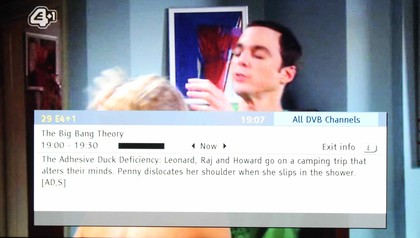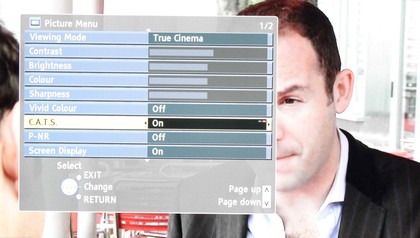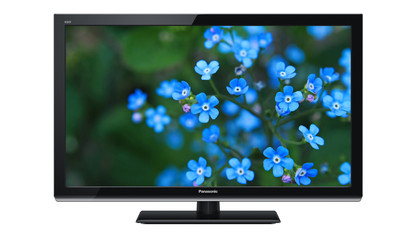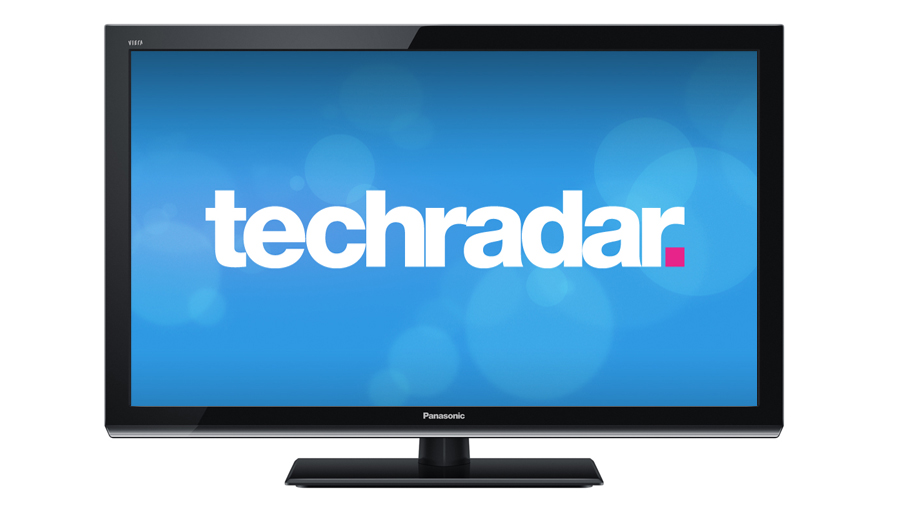Why you can trust TechRadar
Remembering that HD-ready TVs tend to cope far better with standard definition channels that Full HD televisions, we engaged the Panasonic TX-L32X5's Freeview HD tuner. It makes a good argument in favour of using an HD-ready panel in living room TVs.
High-definition channels appear detailed and clean with a bold colour palette, and so – remarkably – do standard definition channels. Surely as a result of that HD-ready panel, digital blocking is rarely visible, with The Big Bang Theory on E4 looking pristine. There is some motion blur, but it's not endemic. Black areas of the image – such as inside a car at night – seem profound, though empty of detail.

With Ironclad on Blu-ray, the Panasonic TX-L32X5's weaknesses are immediately more obvious and distracting. A mixture of that low-res panel and some motion resolution loss means that during a scan from top to bottom of the Magna Carta the text isn't legible, while close-ups betray detail only in still shots.
Using the Cinema preset, colours can seem a little muted, partly because blacks are greyed over. Engage the True Cinema mode for a more profound approach to dark colour within a seemingly brighter image, although we did experience a slight yellowing of the rest of the colour palette.
Incidentally, during our review the Vivid Colour option appeared to make zero difference to images, while the Contrast Automatic Tracking System (CATS) - which monitors the ambient light and alters the panel's brightness accordingly - always reduced the brightness, although too often the sudden fluctuations proved distracting.

At all times blacks are a bit hollow and fake, with little shadow detailing. During one sequence the shadowed ruffles in a character's red robes all merge into one area of grey-red mush. However, despite that HD-ready panel, the detail in images is good, and though far less impressive than a bigger 1080p panel, nevertheless lends enough impact to close-ups.
The main issue is with motion, with the Panasonic TX-L32X5 producing a less than smooth picture from the simplest of shots, though it's most distracting during busy close-ups of actors moving around a shot. It's a shame, because the Panasonic TX-L32X5 otherwise manages a cinematic colour palette that befits the likes of Ironclad.
As usual with Panasonic's IPS Alpha LED panels, the viewing angle is good, with the pixel aperture just wide enough to enable contrast and black levels to hold up when watched from the wings.

During Ironclad we moved positions to the side of the room, and although there was a slight greying over of black areas of the image, and the lustre of colours did reduce slightly, we're talking minor changes here. That's a strength that you rarely get on no-name TV brands.
Although there's not much in the way of processing power-hungry features that sometimes create lag, we enacted the Game mode for a purer shot at glory on FIFA 2012 on an Xbox 360. During matches we didn't notice any lag, though there is loss of resolution and detail when the action hots up, with blur common on camera pans around the stadium, too.
Edges are often frayed and jagged – especially pitch markings, such as the touchlines and the spherical centre circle markings, which came apart and looked totally disjointed each time the camera panned across.
Still, the overall image is otherwise clean and unusually muted for a 'game' mode – most are so, so garish – with strong, true-to-life colouring, profound black levels and pristine peak whites within a clean picture. As an affordable television for occasional, casual gaming, the Panasonic TX-L32X5 just about passes the test.
Jamie is a freelance tech, travel and space journalist based in the UK. He’s been writing regularly for Techradar since it was launched in 2008 and also writes regularly for Forbes, The Telegraph, the South China Morning Post, Sky & Telescope and the Sky At Night magazine as well as other Future titles T3, Digital Camera World, All About Space and Space.com. He also edits two of his own websites, TravGear.com and WhenIsTheNextEclipse.com that reflect his obsession with travel gear and solar eclipse travel. He is the author of A Stargazing Program For Beginners (Springer, 2015),

